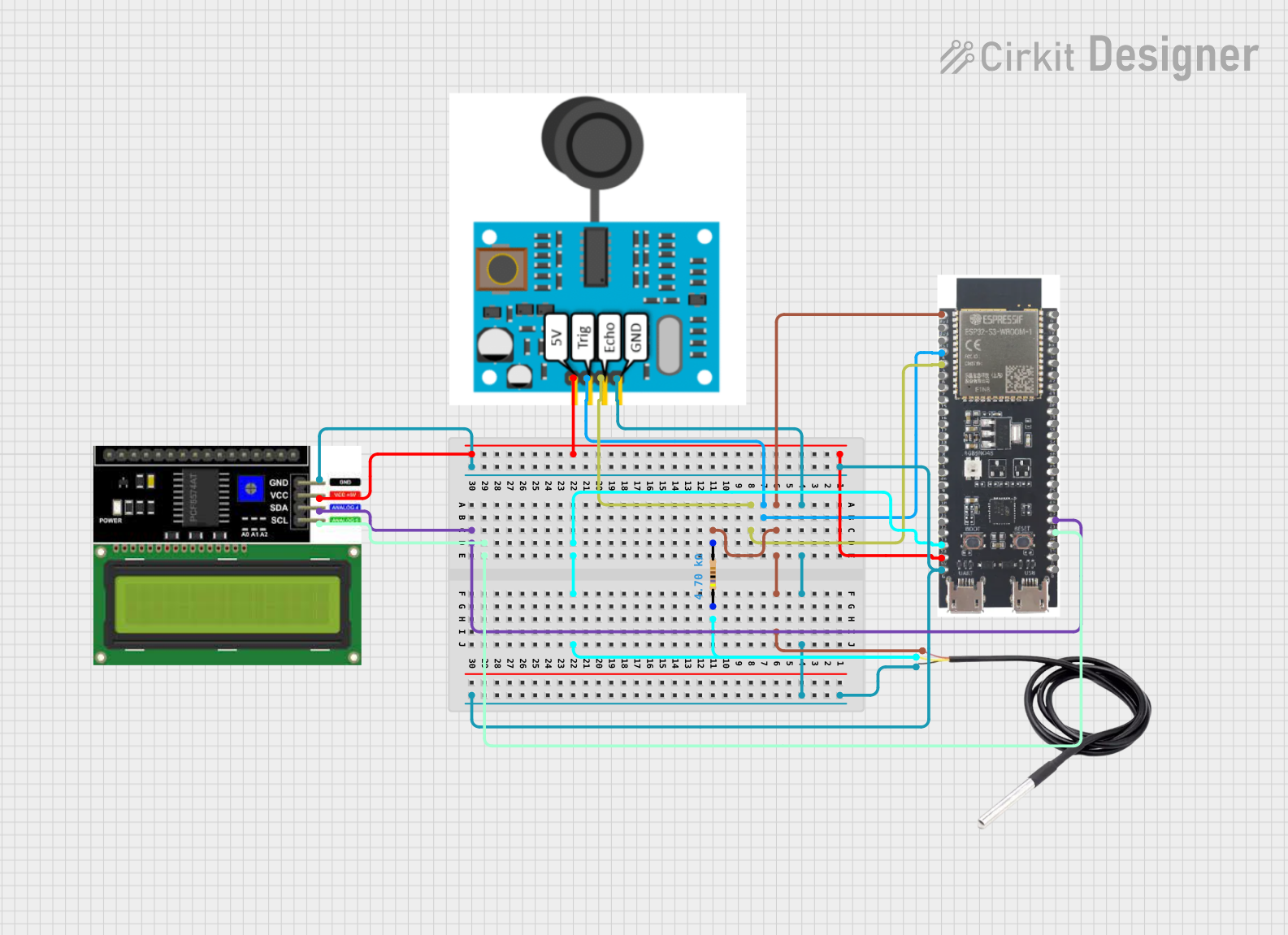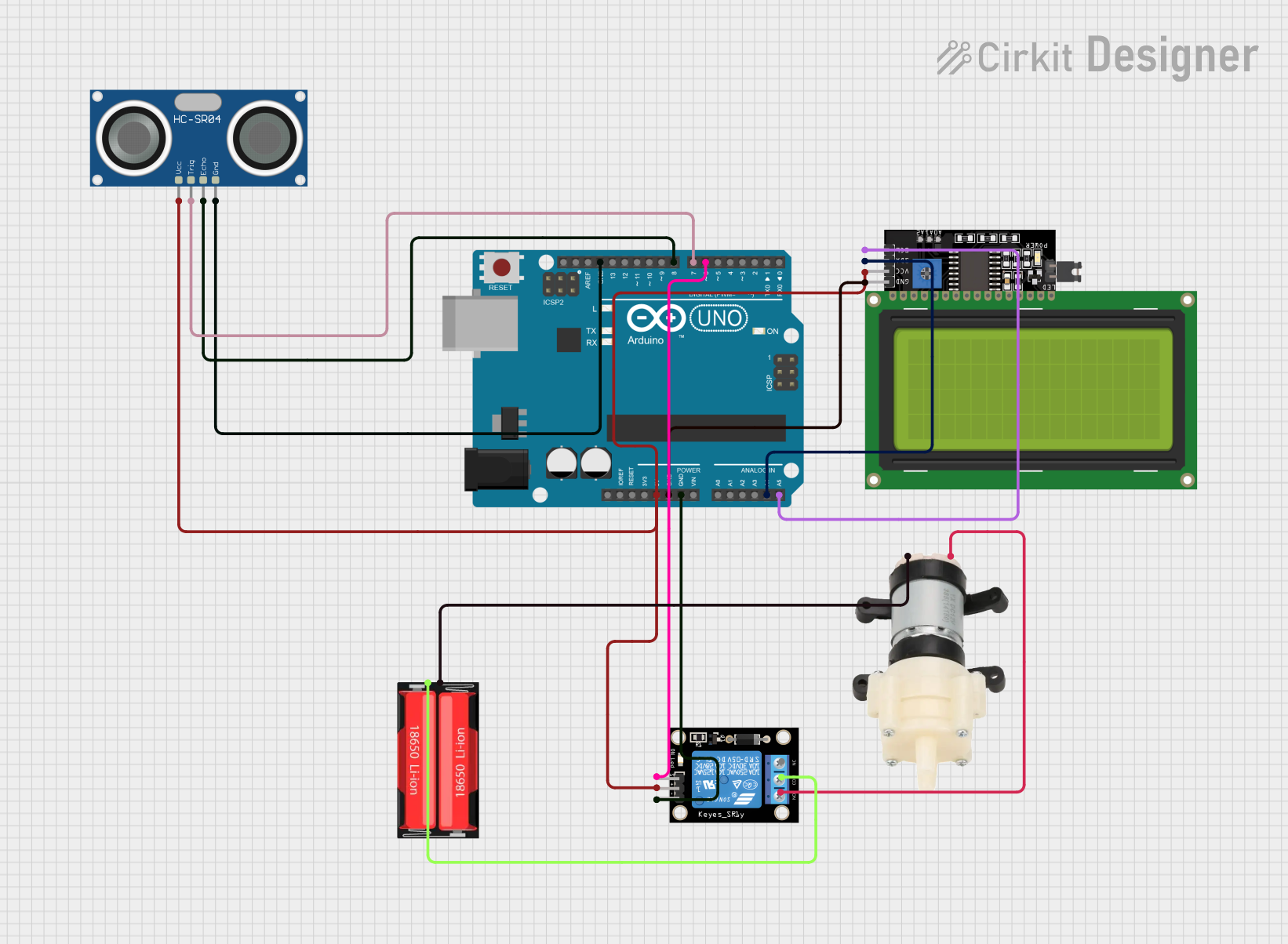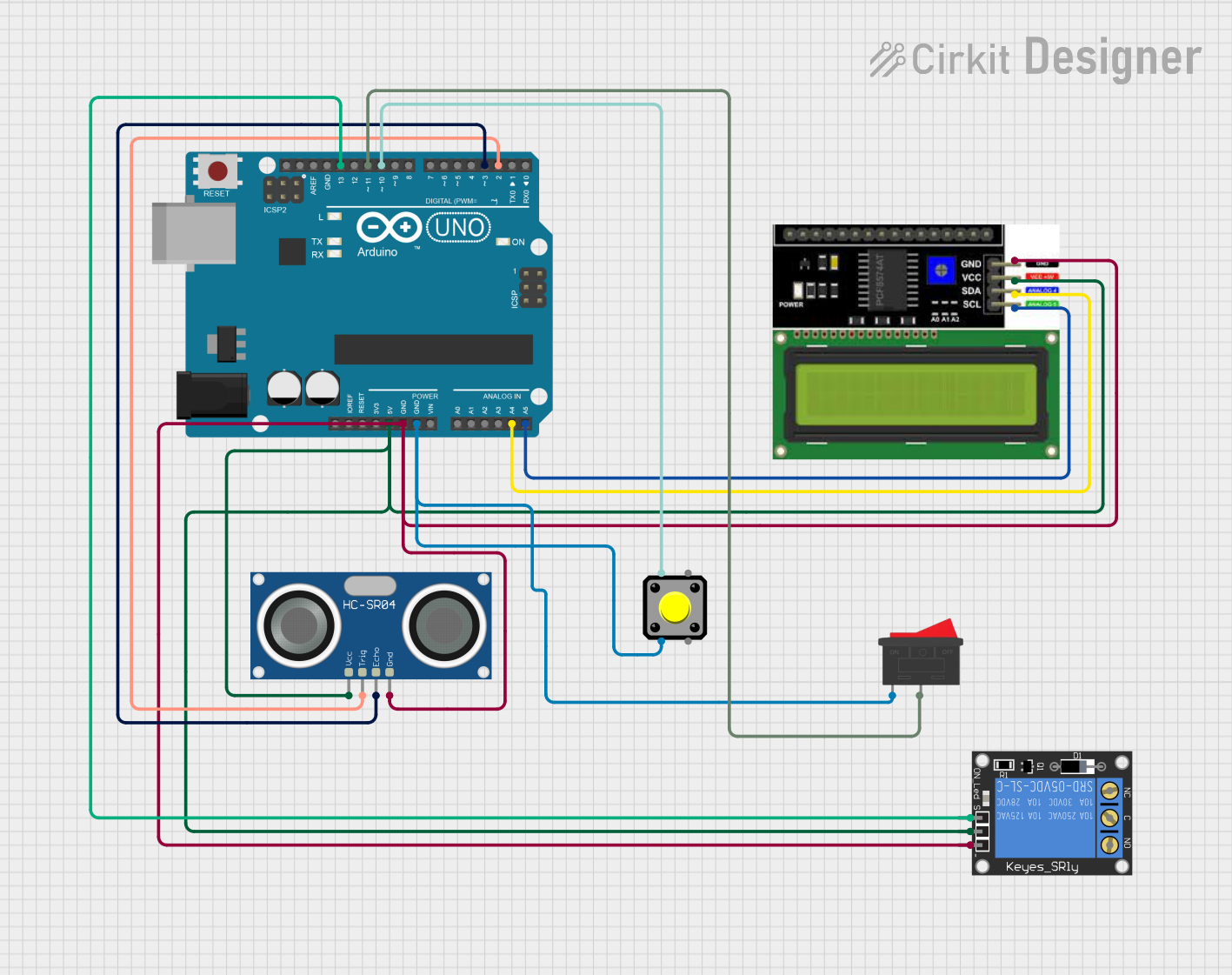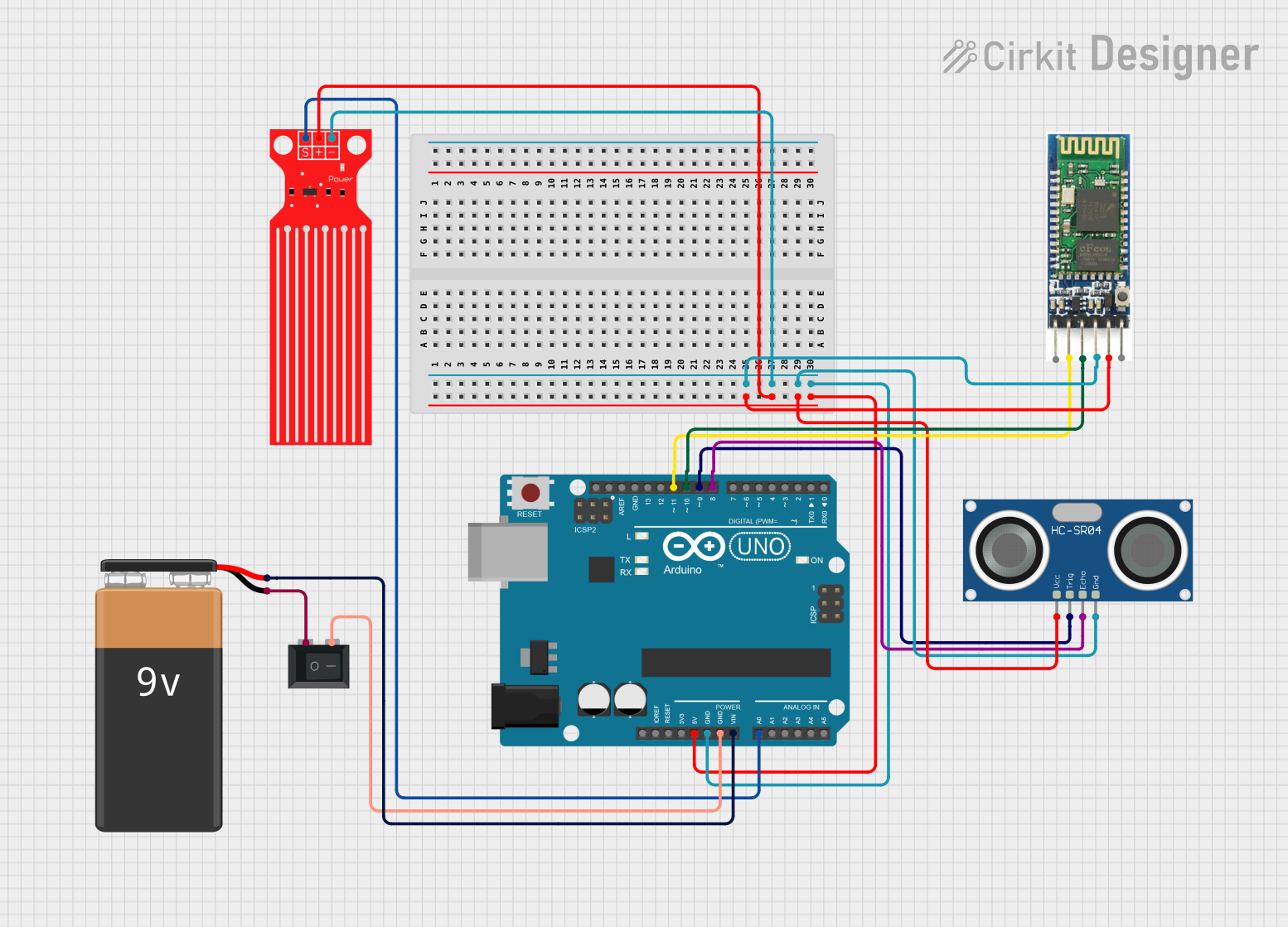
How to Use Water Level Sensor: Examples, Pinouts, and Specs

 Design with Water Level Sensor in Cirkit Designer
Design with Water Level Sensor in Cirkit DesignerIntroduction
The Water Level Sensor is a device designed to detect and measure the level of water in a tank, reservoir, or other liquid-containing systems. It is commonly used in automation systems to control water pumps, prevent overflow, and monitor water levels in real-time. This sensor is ideal for applications such as water management systems, irrigation systems, and home automation projects.
Explore Projects Built with Water Level Sensor

 Open Project in Cirkit Designer
Open Project in Cirkit Designer
 Open Project in Cirkit Designer
Open Project in Cirkit Designer
 Open Project in Cirkit Designer
Open Project in Cirkit Designer
 Open Project in Cirkit Designer
Open Project in Cirkit DesignerExplore Projects Built with Water Level Sensor

 Open Project in Cirkit Designer
Open Project in Cirkit Designer
 Open Project in Cirkit Designer
Open Project in Cirkit Designer
 Open Project in Cirkit Designer
Open Project in Cirkit Designer
 Open Project in Cirkit Designer
Open Project in Cirkit DesignerTechnical Specifications
- Operating Voltage: 3.3V to 5V DC
- Output Type: Analog and Digital
- Output Voltage Range: 0V to 4.2V (Analog)
- Current Consumption: < 20mA
- Detection Range: 0 to 100% water level (based on sensor length)
- Dimensions: Typically 62mm x 20mm x 8mm (varies by model)
- Interface: 3-pin header (VCC, GND, Signal)
Pin Configuration and Descriptions
| Pin Name | Description |
|---|---|
| VCC | Power supply pin. Connect to 3.3V or 5V DC. |
| GND | Ground pin. Connect to the ground of the circuit. |
| Signal | Output pin. Provides an analog voltage proportional to the water level. |
Usage Instructions
How to Use the Water Level Sensor in a Circuit
Wiring the Sensor:
- Connect the VCC pin of the sensor to the 5V pin of your microcontroller or power source.
- Connect the GND pin to the ground of your circuit.
- Connect the Signal pin to an analog input pin of your microcontroller (e.g., A0 on an Arduino UNO).
Reading the Output:
- The sensor outputs an analog voltage that corresponds to the water level. A higher voltage indicates a higher water level.
- Optionally, some models include a digital output pin with a threshold adjustment potentiometer. This can be used for simple high/low water level detection.
Example Circuit:
- Place the sensor vertically in the water container, ensuring the conductive traces are submerged.
Important Considerations and Best Practices
- Avoid submerging the entire sensor, as it is not waterproof. Only the conductive traces should be in contact with water.
- Clean the sensor periodically to prevent corrosion or buildup of debris, especially in hard water environments.
- Use a pull-down resistor on the signal pin if the output is unstable.
- If using the sensor with an Arduino UNO, ensure the analog pin is properly configured in your code.
Example Code for Arduino UNO
// Water Level Sensor Example Code for Arduino UNO
// This code reads the analog output of the sensor and prints the water level
// to the Serial Monitor.
const int sensorPin = A0; // Connect the Signal pin of the sensor to A0
int sensorValue = 0; // Variable to store the sensor reading
void setup() {
Serial.begin(9600); // Initialize serial communication at 9600 baud
}
void loop() {
sensorValue = analogRead(sensorPin); // Read the analog value from the sensor
float waterLevel = (sensorValue / 1023.0) * 100; // Convert to percentage (0-100%)
// Print the water level to the Serial Monitor
Serial.print("Water Level: ");
Serial.print(waterLevel);
Serial.println("%");
delay(500); // Wait for 500ms before the next reading
}
Troubleshooting and FAQs
Common Issues and Solutions
No Output or Incorrect Readings:
- Ensure the sensor is properly connected to the power supply and ground.
- Verify that the Signal pin is connected to the correct analog input pin on the microcontroller.
- Check for corrosion or debris on the sensor traces and clean if necessary.
Unstable or Fluctuating Readings:
- Add a pull-down resistor (10kΩ) between the Signal pin and ground to stabilize the output.
- Ensure the sensor is not exposed to electrical noise from nearby components.
Sensor Not Detecting Water:
- Confirm that the water is in contact with the conductive traces of the sensor.
- Check the water quality; highly distilled water may not conduct electricity well.
FAQs
Q: Can this sensor be used with liquids other than water?
A: Yes, but the liquid must be conductive. Non-conductive liquids like oil will not work with this sensor.
Q: Is the sensor waterproof?
A: No, only the conductive traces are designed to be submerged. The rest of the sensor should remain dry.
Q: How do I adjust the sensitivity of the sensor?
A: Some models include a potentiometer for adjusting the digital output threshold. Turn the potentiometer to fine-tune the sensitivity.
Q: Can I use this sensor with a 3.3V microcontroller?
A: Yes, the sensor operates at both 3.3V and 5V. Ensure the output voltage is within the input range of your microcontroller.